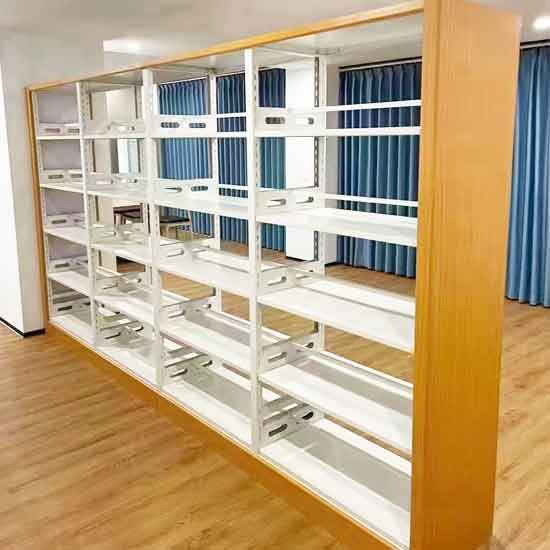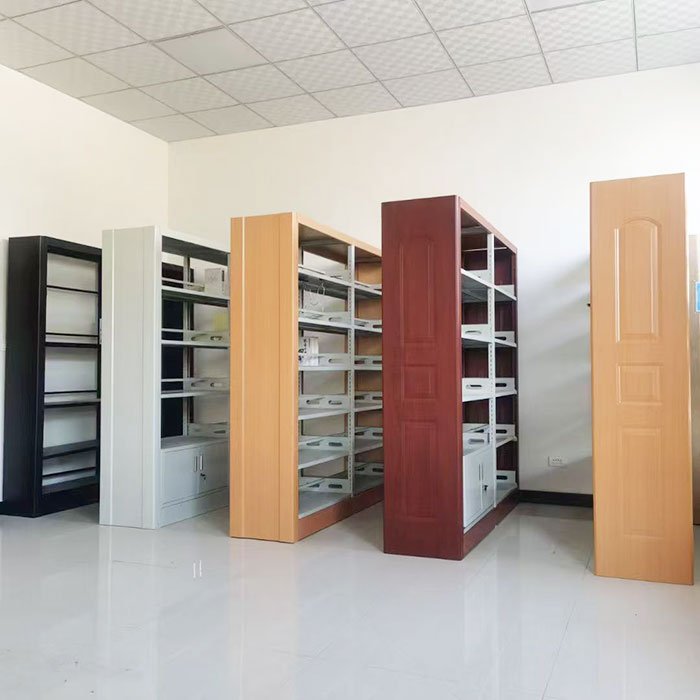How to Choose Metal Bookshelves: A 6-Step Guide for Libraries
Selecting the right metal bookshelves is crucial for libraries seeking durability, functionality, and efficient space utilization. This guide simplifies the process of choosing metal bookshelves through six essential steps. Follow these recommendations to ensure your investment meets long-term needs.
How to Choose Metal Bookshelves|Step 1: Assess Space and Requirements
Before you choose metal bookshelves, measure your library’s dimensions accurately. Consider ceiling height, floor area, and aisle width. Standard metal bookshelves for libraries range from 1.6m to 2.2m in height, ensuring accessibility while maximizing storage. Evaluate your collection size and growth projections. This initial planning prevents overcrowding and optimizes layout efficiency.

Step 2: Prioritize Material and Durability
Quality metal bookshelves must withstand heavy loads and frequent use. Opt for cold-rolled steel or industrial-grade alloys, which offer superior strength and corrosion resistance410. Unlike wood, metal bookshelves resist fire, moisture, and pests—critical for preserving valuable collections. Verify material thickness and finish quality during supplier inspections to ensure longevity.
Step 3: Verify Load Capacity and Structure
Safety is non-negotiable when selecting metal bookshelves. Each shelf should support at least 30kg evenly distributed. Check for reinforced frames, secure welds, and anti-sway bracing. High-quality metal bookshelves feature adjustable shelves with robust locking mechanisms. Test stability under load to prevent tipping, especially in seismic zones.
Step 4: Optimize Dimensions and Ergonomics
When choosing metal bookshelves, align dimensions with user comfort. Shelf depth should be 30–35cm to accommodate most books without overextension10. Layer heights must adapt to varying book sizes—e.g., 24–26cm for standard paperbacks, 28–33cm for larger volumes10. Ensure top shelves are reachable without stools, enhancing accessibility for all patrons.
Step 5: Evaluate Functionality and Flexibility
Modern metal bookshelves offer modular designs for evolving needs. Look for features like:
- Adjustable shelves: Customize spacing for diverse collections.
- Integrated accessories: Label holders, end panels, or dust covers.
- Mobility options: Casters for reconfigurable layouts.
These elements make metal bookshelves adaptable to future library expansions or reorganizations.

Step 6: Compare Suppliers and Installation Services
Finally, vet suppliers specializing in metal bookshelves for libraries. Request samples to assess craftsmanship and material integrity49. Review contracts covering delivery, installation, and warranties. Professional assembly ensures metal bookshelves are anchored securely and leveled correctly28. Prioritize vendors offering post-installation support for maintenance.
How to Choose Metal Bookshelves?Conclusion
Choosing metal bookshelves demands careful evaluation of space, materials, safety, and functionality. By following this six-step guide, libraries can select metal bookshelves that balance durability with user-centric design. Invest in quality metal bookshelves today to create a resilient, organized environment for generations of readers.
